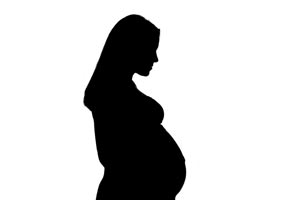Lauren Bloomstein, a 33-year-old neonatal care nurse, died within 24 hours of giving birth to her daughter Hailey. Hours before whilst in labor, Bloomstein complained about sharp pain in her liver and kidneys and doctors administered another dose of epidural. She died of a hemorrhagic stroke, HELLP, and preeclampsia. Her death was completely preventable, as are 60% of postpartum obstetric deaths are.
The US prides itself on having mortality rates ranging from 4.2-11.3 (per thousand live births) across racial lines (non-Hispanic black babies being the highest end of this statistic). When presented with a fractional incident there is a sense of development within the medical field
But that has also caused an issue. When we picture prenatal care in order to prevent death, we picture precautions to ensure the survival of the baby. Ultrasounds, specialists, parameters for the mother to ensure no trauma affects the fetus. There are ICU’s dedicated to only newborns.
But what about the mother?
Not to say these treatments are unnecessary—they are. Objectively both parties should be given all the care possible to ensure health and survival.
But that has not happened.
The US has the highest maternity fatality in the developed world. 26.4 women out of 100,000 births die due to complications of their birth.
A model of what care could and arguably should be can be found in the state of California, where the Maternal Quality Care Collaborative, set out to solve the issue of deaths in new mothers. That led to the creation of hemorrhage carts that could be deployed quickly in case of pre or post-birth bleeding. Also creating a protocol for preeclampsia (complications considering kidney and liver failure, high blood pressure (can only be solved by birth)), to prevent eclampsia (a state of shock where the mother begins to seize).
This is why even as the national average goes up, California has managed to lower their fatalities to 7.3, less than a third of the average.
Title V, Maternal and Health Services Block Grant, passed in 1998 was done so to give funding for sufficient and accessible prenatal/postnatal care (along with other services pertaining to special needs in the child and treatment both before and after birth). It gave 6% to mothers for pre/post care. 78% went to infants and special-needs children care.
The system focuses itself on treating the infant, not the mother. Instead of being two parts of a whole it is a mother is purely incidental to the birth—even if she is the one to usher the child into the world and raise it from then on.



![{source:other,uid:CAE9154F-0F5B-4BBF-8FB5-B8FB74BBCB27_1633101105193,origin:gallery,fte_sources:[],used_sources:{version:1,sources:[]},premium_sources:[],is_remix:false}](https://lakewoodtimes.net/wp-content/uploads/2021/10/E5C07CA4-47B8-42B5-BA21-891638E46484.jpeg)



















